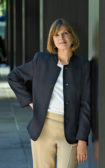Cathleen McGuigan
Cathleen McGuigan served as editor in chief of Architectural Record from 2011 to 2022.
ARTICLES
Design, Technology, and the City
Inspiring work and ideas from the profession's great talents.
Read More
Copyright ©2024. All Rights Reserved BNP Media.
Design, CMS, Hosting & Web Development :: ePublishing


